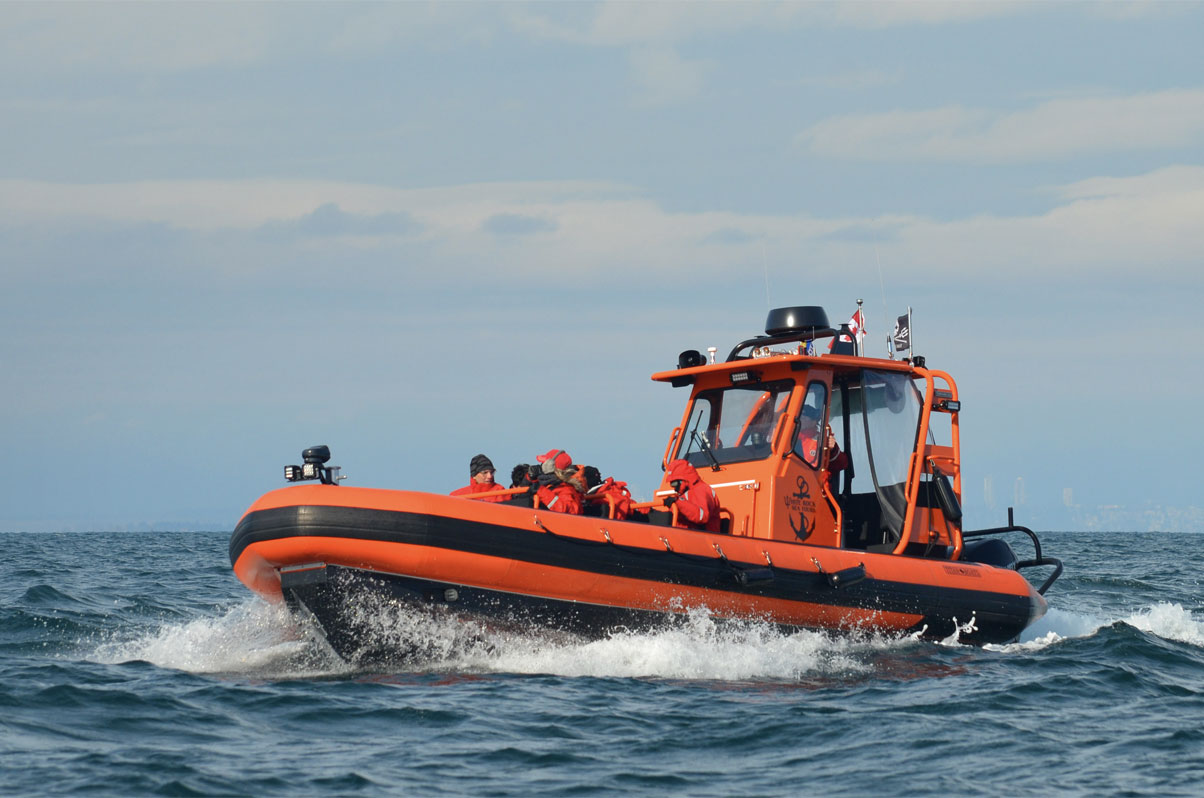
I am an operator for C-Tow in the White Rock, BC, near Surrey, covering an area of Boundary Bay and the southern Strait of Georgia. I often combine my previous Search and Rescue (SAR) training with the expert skill set that all C-Tow captains must possess.
Since we all receive a variety of calls throughout the season, C-Tow captains must make risk and on-site assessments of the situation. This helps determine all of the possibilities to complete a safe and successful rescue.
I have been working with C-Tow since 2014 and have been dispatched to many situations over the years. I find that boaters are just not prepared for these waterways and the common unexpected conditions. Sometimes, they head out in boats that are not maintained, don’t have the proper safety gear and don’t realize how easy it is to get lost and into trouble.
But sometimes I get the oddest calls. An interesting dispatch for C-Tow happened one January. An owner of an 18-foot bowrider got lost on Boundary Bay. He was a local crabber that I knew socially from the area. He didn’t check the weather before heading out and the conditions turned nasty. It was one of those zero-visibility days with heavy fog, strong winds plus a rare blinding snowstorm moved in. Two- to three-foot seas just added to the bad weather.
After I was dispatched, I spoke to the boater and assessed his situation. I could hear the panic in his voice. He had no idea where he was, he didn’t have a GPS or safety gear such as a whistle or a flare, and that he was getting cold. He couldn’t really help himself.
I asked if he had any injuries (he didn’t) and if he was by himself (he was). Since a squall was quickly coming in, I told him to drop anchor right away and we’ll come and find him. He could’ve been anywhere.
This was an urgent situation and not just a routine call. So, I notified the Canadian Coast Guard Auxiliary explaining the details and called my deckhand for assistance.
The first rule of search and rescue is to start from the boater’s home port. In this case, it was Crescent Beach Marina. I have been operating in this region for many years and can often determine a location by water depth since there are a few well-known shallow areas.
Unfortunately, he couldn’t tell me the water depth.
So, my deckhand and I headed out in my 32-foot 240 Titan Offshore RIB, taking the approach channel from the marina, into the bay and then south toward Point Roberts. By this time, the waves were peaking at four feet, there was no visibility and the snow was blowing hard.
We started our search in the middle of the bay since the wind commonly blows from the southeast to the northwest, which typically takes boaters in distress in a northerly direction towards shallow water. Following the direction of the wind, we finally caught a glimpse of him. He was close to the area where I predicted and was about three nautical miles from the marina. So he wasn’t too far off the beaten’ path.
The Canadian Coast Guard Auxiliary was on the scene a few minutes later. He didn’t need a tow but he did need an escort back to the marina. At the time, my Titan’s helm wasn’t enclosed and the T-top didn’t provide any protection from the elements. It was cold and nasty as hell. But the boater was happy to get the heck out of there.
We brought him back to the marina without further incidents and despite the terrible conditions, it was a positive outcome. He was also very appreciative of C-Tow’s efforts
This type of weather doesn’t happen very often in this area of the BC Coast, but the boater should never have been out there in the first place. He didn’t have a life jacket, environmental protection gear, a marine radio, or even safety equipment.
To this day, I still don’t know what he was actually doing out in a snowstorm on the Pacific Ocean in January, but as a C-Tow captain, all of our efforts were made to bring him into port safely.
